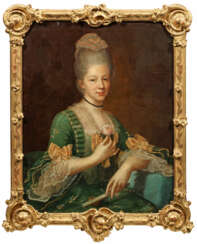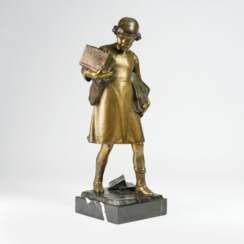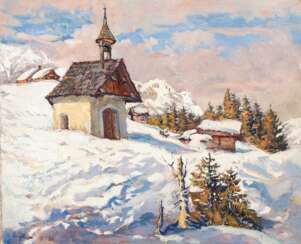heinrich apel

Johann Heinrich Tischbein the Elder, known as the Kasseler Tischbein, was one of the most respected European painters in the 18th century and an important member of the Tischbein family of German painters, which spanned three generations.
His work consisted primarily of portraits of the nobility, mythological scenes, and historical paintings. For his mythology paintings his models were mostly members of the upper nobility.


Victor Heinrich Seifert was an Austrian sculptor.
Seifert studied first at the University of Applied Arts in Vienna and later at the Berlin Academy of Art. After the end of World War I, he created many war memorials for German cities and towns, for which he became famous. Seifert also worked on classical nude sculptures in bronze.


Heinrich Franz Gaudenz von Rustige was a German painter of the second half of the nineteenth century. He is known as a historical and genre painter as well as a teacher.
Von Rustige in 1845 became a professor at the Stuttgart School of Fine Arts, and also managed an art gallery and a royal collection of art objects. In 1887, due to his advanced age, he retired from teaching and concentrated on his art. His works cover a variety of genres including historical and genre scenes, landscapes and portraits. Rustige's paintings can be seen at the National Gallery (Berlin) and the Art Museum in Düsseldorf.
Rustige is also known as a poet, having written a volume of lyric poems and historical verse dramas.

Johann Heinrich Wilhelm Tischbein was a German painter, master of portraiture; a member of the famous Tischbein artistic dynasty, one of the closest friends of the poet Johann Wolfgang Goethe.
He studied painting with his uncle Johann Jacob Tischbein in Hamburg. In 1772-1773 he made a study trip to Holland, and from 1777 was engaged in portrait painting in Berlin. In 1779 he went to Rome on a scholarship to the Academy of Arts in Cassel. After studying the antique art monuments he gradually changed his painting style from rococo to classical. In Italy he painted mostly landscapes, still life and history.
From 1789 to 1799 Johann Heinrich Wilhelm painted in the period from 1789 to 1799. Johann Heinrich Wilhelm Tischbein was director of the Academy of Arts in Naples.


Carl Friedrich Heinrich Werner was a German watercolorist.
Carl Werner studied painting and architecture in Germany, then moved to Italy, where he painted watercolors for nearly twenty years and exhibited in London and other European cities. From 1862 to 1864 he traveled to Palestine and Egypt. He produced impressive paintings of the architectural monuments of that world. Among his works, the voluminous work "Jerusalem, Bethlehem and the Holy Places" with views of the Holy Land, containing 32 plates, is particularly notable. It is one of the rarest books with color plates on the Middle East.
Werner was one of the few non-Muslims given access to paint the interior of the Dome of the Rock, and there are also views of Bethlehem, Bethany, and the Dead Sea, while Jerusalem includes street scenes, the Greek and Armenian chapels, the Church of the Holy Sepulchre, the Street of David, and the Wailing Wall.
















































































